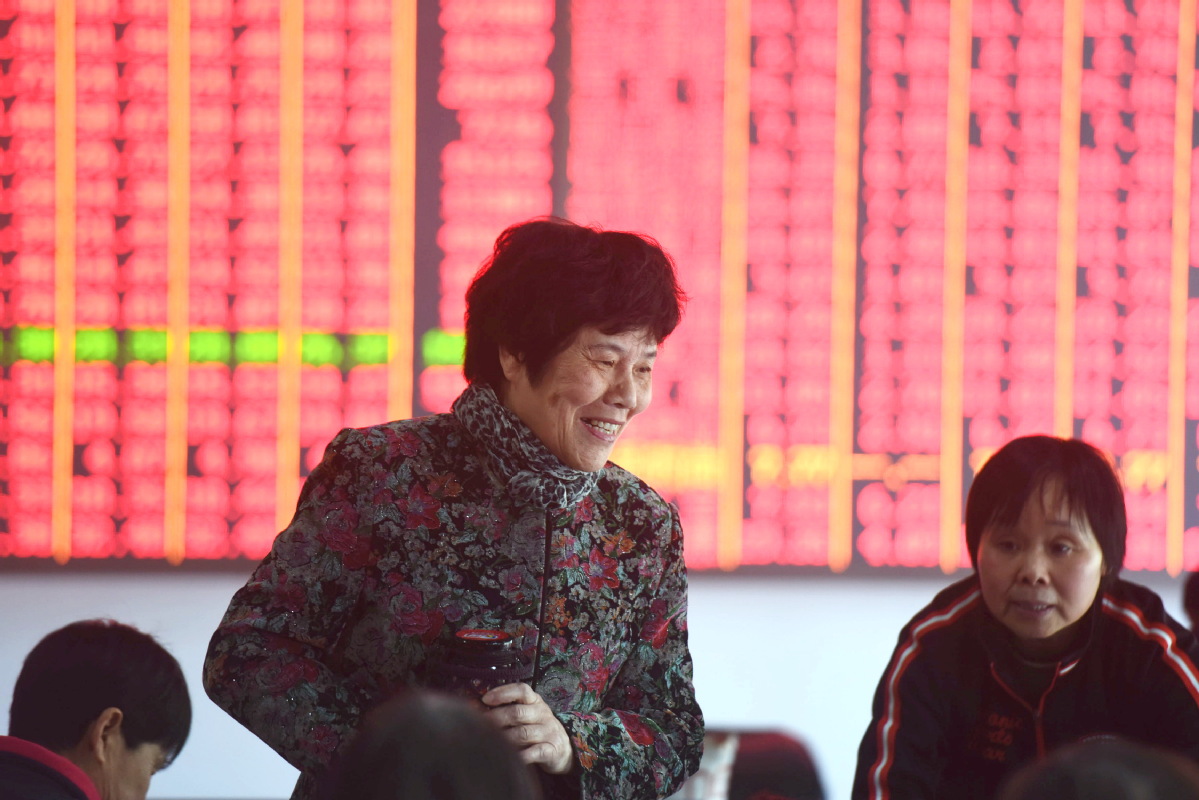Stocks rally on key data points from China, US


Manufacturing reports in both countries show expansion, propelling global shares higher
When something substantial happens in the Chinese and American economies, the stock market responds.
On Monday, the first day of the second quarter of 2019, stocks rallied after two encouraging reports on manufacturing — one from each country.
The Caixin China manufacturing purchasing managers index (PMI), which reached 50.8 in March from 49.9 in February, moved to an expansionary level for the first time in four months.
China's official manufacturing PMI, released on Sunday, attained a six-month high of 50.5 in March, from 49.2 in February.
In the US, the Institute for Supply Management's manufacturing index registered a stronger-than-expected 55.3 level in March compared with a two-year low of 54.2 percent in February.
The ISM said 16 industries, including machinery, computer and electronic products, furniture, and electrical equipment, appliances and components, reported growth last month.
A reading above 50 in both indices indicates an expansion in activity.
The Dow Jones Industrial Average rose 329.74 points on Monday to 26,258.42, a 1.27 percent gain. The S&P 500 finished at 2,867.19, up 32.79 points, or 1.16 percent. The Nasdaq Composite closed at 7,828.91, advancing 99.59 points to 1.29 percent.
In China, the Shanghai Composite index closed up 2.6 percent, or 79.6 points to 3,170.36, its highest level since May 2018. The Shenzhen Stock Exchange Composite Index jumped 60.53 points to 1,755.66 and has gained 38.4 percent so far in 2019. The Hang Seng index in Hong Kong surged 510.66 points, or 1.76 percent, to 29,562.02.
"It was the one-two punch in terms of positive manufacturing PMI data from China and the US, two big economies, and that has emboldened the bulls in the market," said John Kilduff, a partner at Again Capital Management in New York.
"The double dose of manufacturing data from China and the US eased a lot of global growth worries," Kamal Khan, US editor at investing.com, told China Daily. "That showed up in the rebound in Treasury yields, which helped stocks after the recent yield-curve inversion. Yields also helped financials in particular."
"The Chinese (manufacturing) numbers bounced back, and people are taking more risk today because of it," said Michael O'Rourke, chief market strategist at JonesTrading in Greenwich, Connecticut.
The Stoxx Europe 600 rose 1.2 percent, buoyed by China's manufacturing numbers even though Europe's own manufacturing data was at a six-year low.
Italy last week became the first G7 nation to agree to join China's Belt and Road Initiative.
The strong showing for stocks sent bond prices lower and their interest rates higher. The 10-year Treasury note's yield climbed 8 basis points to 2.496 percent.
When investors see brighter prospects in risk assets such as stocks, government bonds, which are considered safer, move lower.
The positive economic data showed up as a Chinese delegation led by Vice-Premier Liu He heads to Washington on Wednesday for the next round of trade talks.
On Sunday, China's State Council said that the country would continue to suspend additional tariffs on US vehicles and auto parts after April 1, following a US decision to delay tariff increases on Chinese imports.
Buoyed by that news, Ford Motor Co shares gained 2.3 percent, and General Motors Co stock added 1.8 percent Monday.
The manufacturing numbers along with tighter supplies also propelled two benchmark oil indices to their largest first-quarter gains in nearly a decade.
Brent crude rose $1.43, or 2.1 percent, to $69.01. The global benchmark was up 27 percent in the first quarter.
US West Texas Intermediate (WTI) futures settled up $1.45, or 2.4 percent, at $61.59 per barrel, and earlier on Monday reaching their highest level in nearly five months at $61.72. WTI has gained 32 percent in the first quarter.
Production cuts from the Organization of the Petroleum Exporting Countries helped push the group's supply to a four-year low in March, a Reuters survey found.
Output from OPEC countries dropped by 280,000 barrels a day from February to 30.4 million, its lowest monthly rate since 2015.
Saudi Arabia had the largest drop in the group's supply-cutting pact while Venezuelan output fell further due to US sanctions and power outages in a country in the midst of political upheaval. Oil prices also are being supported by US sanctions on Iran.
Reuters and Bloomberg contributed to this story.
































